The Most Powerful PHP Frameworks for 2024
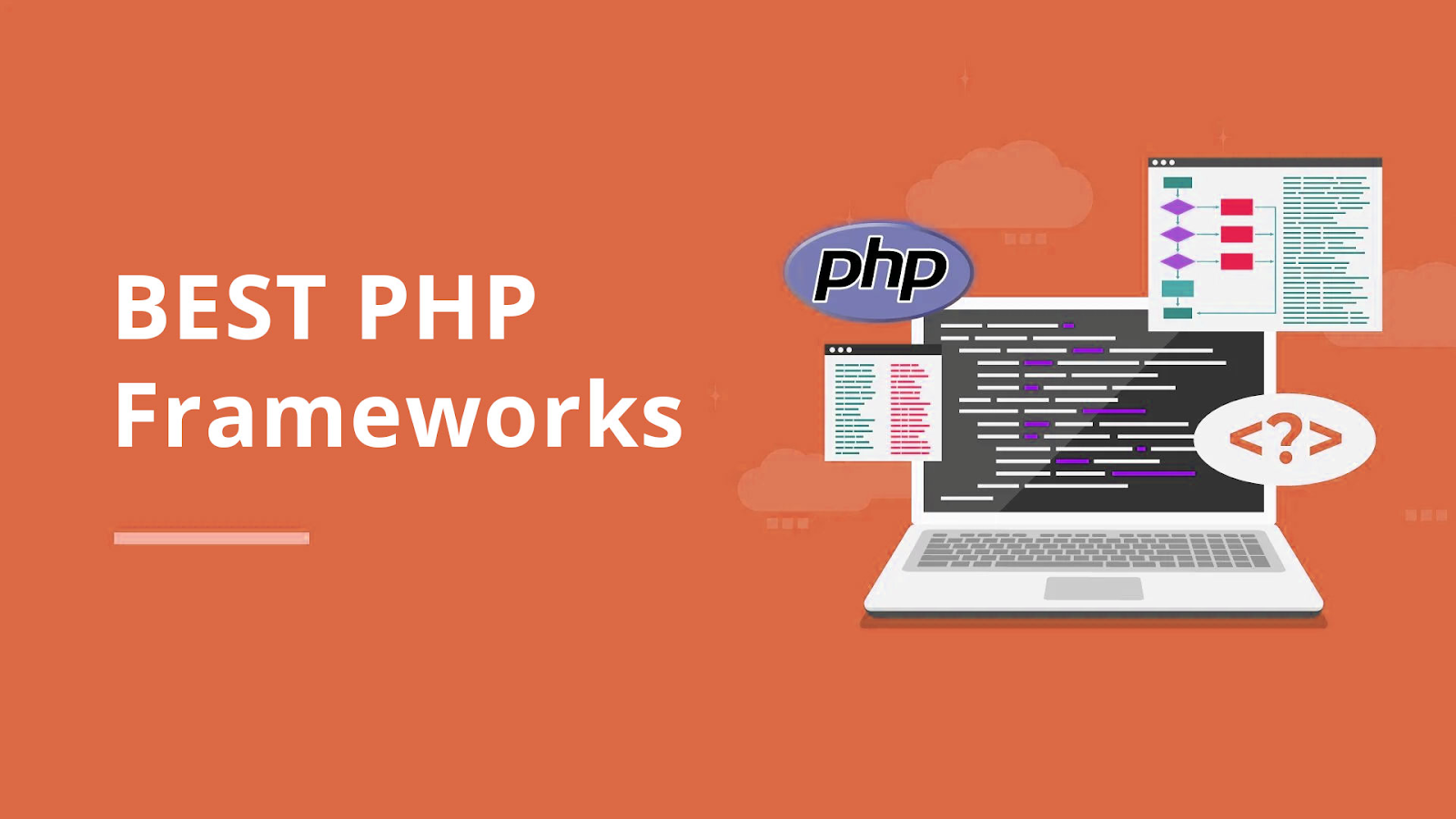
When we think about web development, PHP language is the most crucial thing that comes to mind after HTML, JavaScript, and CSS. Isn’t it?
Contrary to the popular belief of some geeks, you should know that PHP is not dead in the market. Still, many websites, including the top biggies like Wikipedia and Facebook, are using PHP.
According to a web development survey, 79% of all websites are using PHP. It’s eight times more popular than ASP.NET., its closest competitor in server-side programming languages.
any prior experience.
In the graph, you can see that PHP’s usage share is consistent in the last few years.
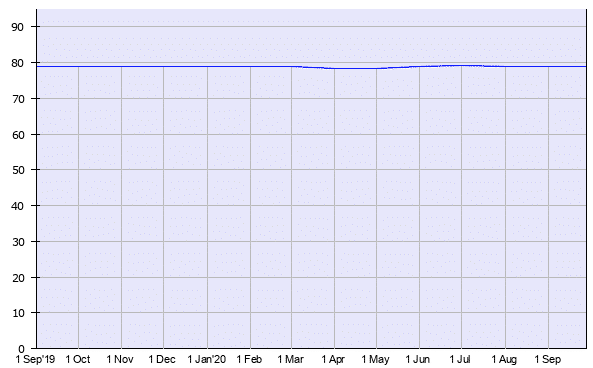
Do you know frameworks also mitigate the weakness of the PHP language? It makes them safer for software development.
Today software development has become complex and needs module use, design patterns, and tools to build quality and secure applications in a reasonable timeframe. It’s where frameworks mark a big difference.
This blog will share the list of the best PHP frameworks and know their core strengths and weaknesses. By the end of the reading, you’ll have a better understanding of the PHP framework that covers your specific web development requirements.
So, let’s get started with the list of the most powerful PHP frameworks for 2024.
1. Laravel

Laravel comes first in the list of most popular frameworks 2024. Since its inception, it has grown into a mature framework, having hundreds of contributors and millions’ installations.
Quick Outlook
Launched: June 2011
Latest version: 8, released on September 8th, 2020.
Technical specifications: PHP >= 7.2.5 (or use Laravel Homestead)
Composer installed
Database support for MySQL 5.6+, PostgreSQL 9.4+, SQLite 3.8.8+, SQL Server 2017+.
It’s MVC based-architecture and utilizes its templating language -Blade, making it easy to create HTML layouts. For data accessing, the framework uses Eloquent ORM, which is simple to understand and use.
Eloquent ORM is an object-relational mapper, allowing you to define models and relationships in PHP. It’s then translated and executed as SQL. It keeps the code clean and simple while letting you easily switch to another database system if you wish.
Laravel stands out due to its enormous variety of features, packages, and applications that make Laravel development faster and easier.
The Pros of Laravel
- It’s the best starting point for newbies, all thanks to its excellent documentation and community.
- The syntax is straightforward, and you can make it so intuitive that your code works like “magic” . It makes Laravel easy to learn plus understand without any prior experience.
- The syntax is straightforward, and you can make it so intuitive that your code works like “magic” . It makes Laravel easy to learn plus understand without any prior experience and for more guidance you can get connected with Laravel experts.
- It has every feature that the advanced applications may need, along with being highly secure and robust.
- You can quickly deploy to AWS or other cloud service providers, and all thanks to Laravel Envoyer and Laravel Forge.
- You can install many applications and packages for adding new features (Eg. built-in subscription billing with Laravel Cashier).
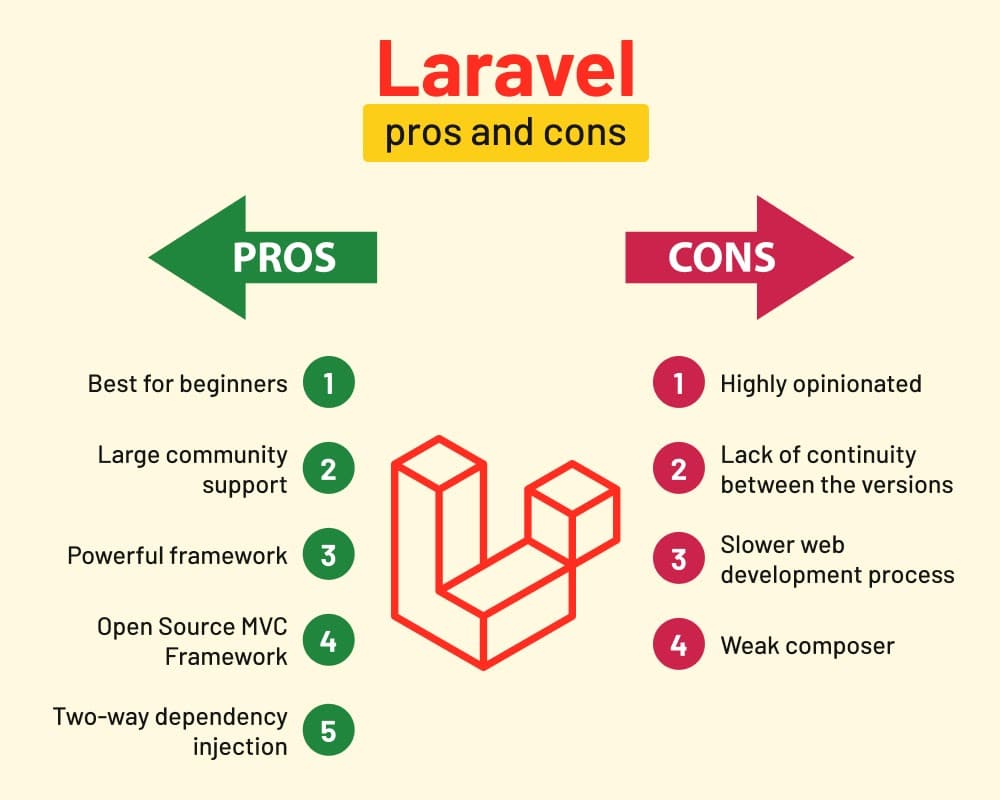
The Cons of Laravel
- Many web developers find the Laravel framework highly opinionated due to its syntax and enforced project structure.
- There is a lack of continuity between the Laravel versions. After the 4th version, no transition has been made to its 5th version. It can break the app if you try to make a change or update the code.
- Laravel web development is a bit slower than other frameworks.
- The framework’s composer is not strong enough.
Additional Details
- Git Star: 64.1k
- Forks: 20.5k
- Downloads: 104m
- Commits: 6460
- Companies Using: 9GAG, Crowdcube, Pfizer, BBC
2. CodeIgniter
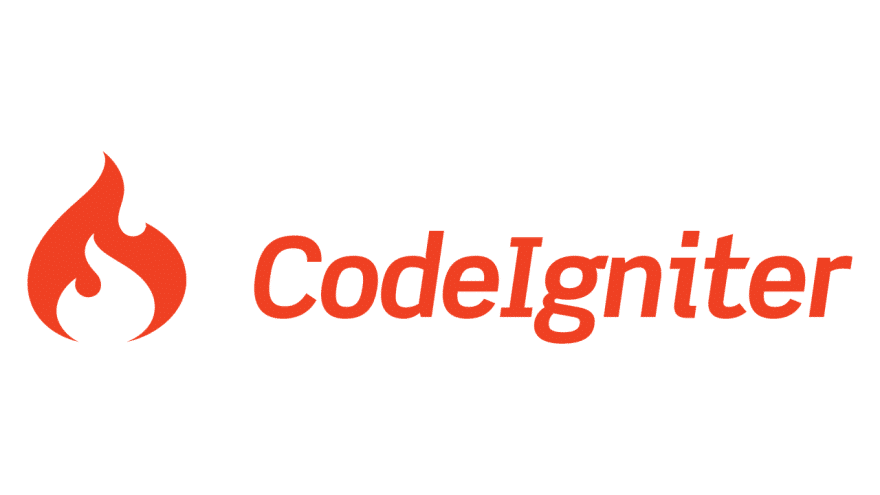
The MVC framework CodeIgniter helps the developers to create new projects rapidly. The other best thing about it is that it’s not a restrictive framework and can use a toolkit that speeds up development.
Most PHP frameworks demand the MVC approach, and even though CodeIgniter supports the use of the MVC pattern, it doesn’t enforce it. It offers to cache, support multiple databases, routing, and other prevalent features in advanced web applications. These features are packaged neatly, and you can use them flexibly.
Small and large organizations use Codeigniter for building APIs and lightweight web applications.
Quick Outlook
Launched: February 2006
Latest version: 4.0.3
Technical specifications:
PHP >= 7.2
Database support for SQLite3, MySQL, PostgreSQL,
The Pros of CodeIgniter
- Small overall footprint due to its fewer built-in features.
- It provides excellent performance, fast loading times plus needs less optimization.
- In most PHP frameworks, the MVC pattern is enforced, but in CodeIgniter, you are free to choose any design pattern you prefer.
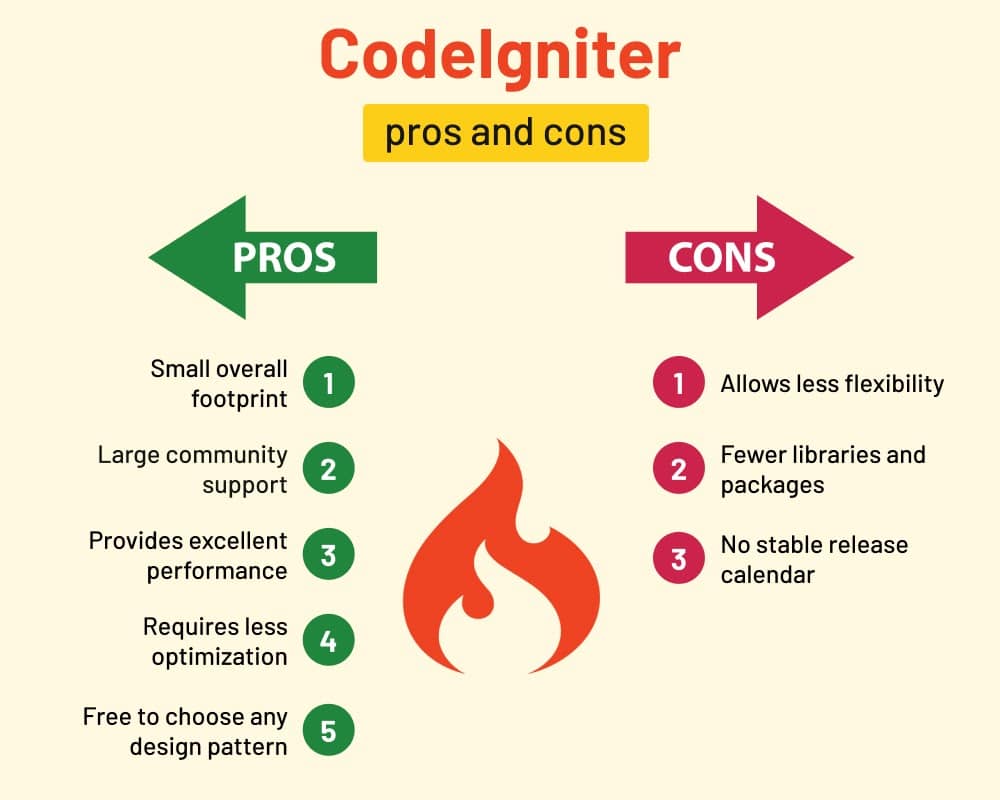
The Cons of CodeIgniter
- It allows less flexibility, but it’s also a mixed edge because achieving code maintainability can be challenging.
- It generally has fewer libraries and packages for creating new features than other more popular frameworks.
- It doesn’t offer a stable release calendar. Thus, security issues can even take time to address.
Additional Details
- Git Star: 18.1k
- Commits: 10,113
- Forks: 7.8k
- Companies Using: Ola, Accenture, Social dog, Buffer.
3. CakePHP
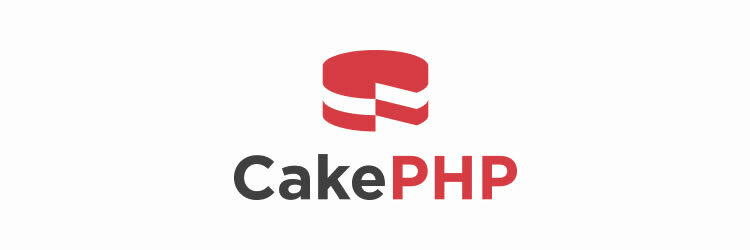
CakePHP is the best option for commercial application projects. It offers high-end security with features like SQL injection prevention, cross-site scripting protection and, cross-site request forgery protection, among many others. Furthermore, extra features include validation, fast builds, and proper class inheritance.
Furthermore, excellent community support is a plus point as this best PHP framework gets tremendous support from its parent organization and has many supporting portals.
Besides, the framework’s latest version has added improved modularity plus an increased ability to build extra standalone libraries. The framework has simple learning, and you can install it easily. It requires only a web server and framework copy.
Quick Outlook
Launched: April 2005
Latest version: 4.1.1
Technical specifications:
PHP 7.2 (minimum), 7.4 recommended
HTTP server with mod_rewrite preferred
Database support for PostgreSQL 9.4+, MariaDB 5.6+, MySQL 5.6+, SQLite 3.8, SQL Server 2012+.
The Pros of CakePHP
- CakePHP’s convention-based setup makes it easy to develop new applications quickly.
- It has many built-in features, such as validation, authentication, localization, and more.
- The framework contains all advanced security features, plus the Mozilla Secure Open Source program has reviewed its codebase.
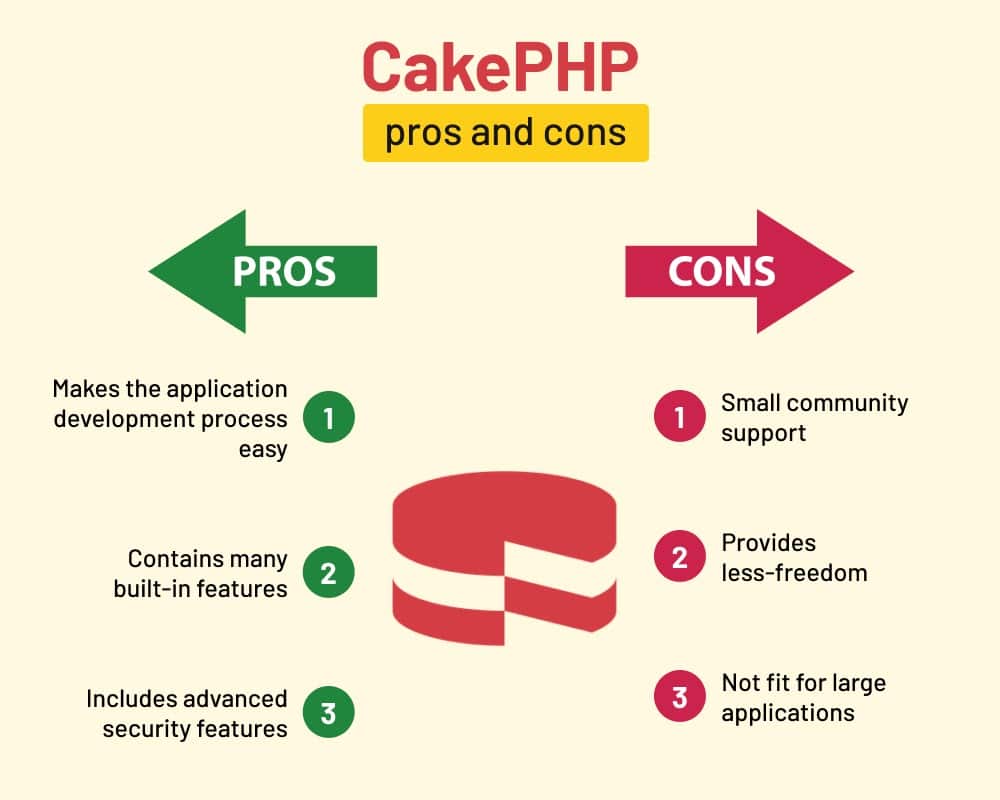
The Cons of CakePHP
- CakePHP has a small community; thus, it’s tough to find solutions to some specific issues.
- It doesn’t support default routes for fancy URLs, which is possible in most other frameworks.
- It’s convention-based, which means you get less freedom.
Additional Details:
- Git Star: 8.3k
- Forks: 3.5k
- Downloads: 6.8 M
- Commits: 42,618
- Companies Using: Walls, Swat, Edureka
4. YII2

Do you know that Yii 2 follows the DRY (Don’t Repeat Yourself) concept?
It is the successor of the popular PHP framework Yii. Those looking to develop options for large-scale website development can go with the Yii 2 framework and can integrate with jQuery and AJAX features. You can also hire web programmers in India at affordable rates for web development on a large scale.
The lazy loading technique of Yii2 makes it best among other PHP frameworks. This makes the framework faster than others in the mix.
Furthermore, it comes with a powerful class code generator called Gii. Yii’s function is to facilitate the process of object-oriented programming and rapid prototyping. It provides a web-based interface, helping the web developer in generating the desired code interactively.
Quick Outlook
Launched: December 2008
Current version: 2.0.35
Technical specifications:
PHP >= 5.4.0, 7+ recommended
Composer installed
Database support for SQLite, MySQL, PostgreSQL, MSSQL, or Oracle databases
The Pros of Yii
- It provides the fastest framework for developing Web2.0 applications (large scale).
- It’s a full-stack framework plus supports many front-end operations with AJAX, like validating inputs.
- It provides excellent performance and fast loading times due to being small weight.
- It offers automated CRUD generation with its visual tool Gii.
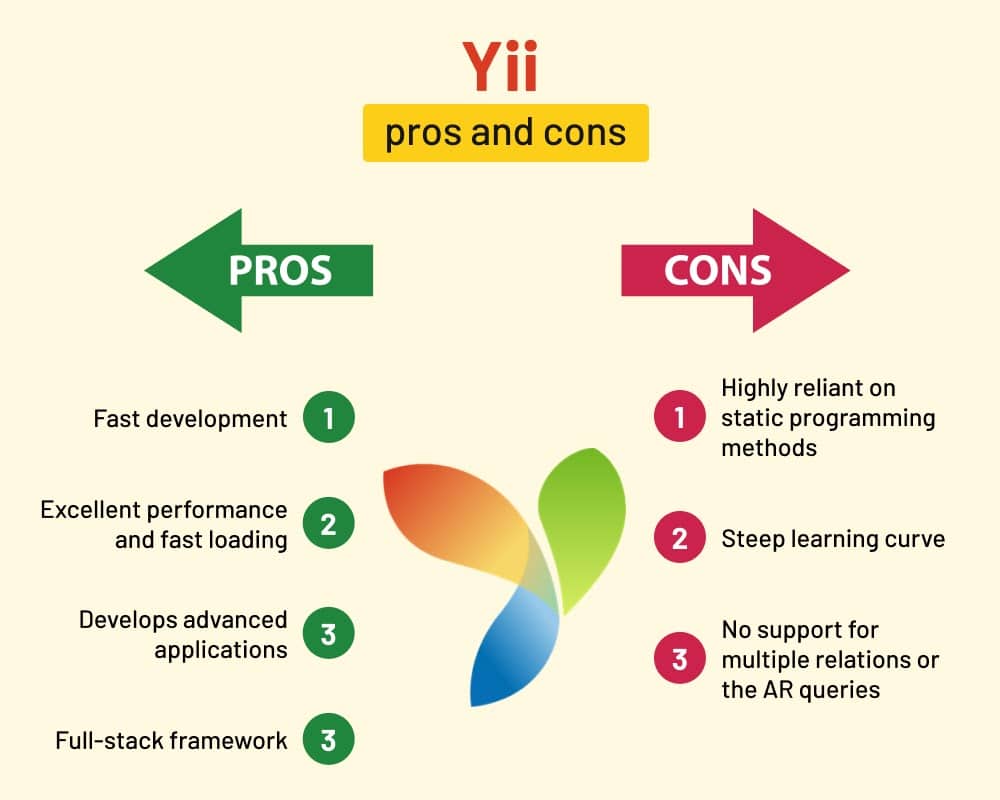
The Cons of Yii
- The ORM used in Yii has weak support for complex relationships and queries. It may force you to write raw SQL while losing some of the benefits of using an ORM.
- Many features, such as queues and broadcasting, are not supported by default and require extra configuration and installations.
- Yii is harder to learn, especially for the newbies or less experienced developers.
Additional Details:
- Git Star: 13.7k
- Forks: 6.9k
- Downloads: 12 M
- Commits: 19,528
- Companies Using: Deloitte, Evergreen, Discovery
Wrapping it Up!
So, that’s all with the most powerful PHP frameworks for 2023. I hope this detailed article proves helpful to you in choosing the proper PHP framework for you. My list covers the names of all the popular frameworks that you can consider for web development. Along with this, it covers all the essential information that can guide you properly.
But, this is also true that the other frameworks also enjoy fantastic community support and contain advanced features. You can go with any framework according to your requirement or better if you consult a PHP development company. They will guide you better.
My blog intends to provide a detailed guide to aid you in picking the proper PHP framework for your next web project. But still, if you want to suggest anything, or I have missed anything, let me know in the comment section.

